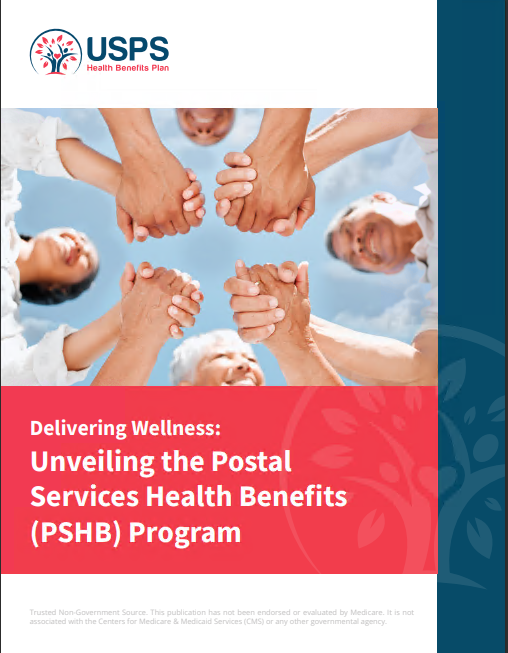Key Takeaways
-
Understanding your PSHB deductible helps you manage healthcare expenses and avoid unexpected costs.
-
PSHB plans have varying deductible structures, so comparing options can ensure you choose one that aligns with your budget and healthcare needs.
The Role of Deductibles in PSHB Plans
When you enroll in a Postal Service Health Benefits (PSHB) plan, one of the first things you should evaluate is the deductible. Your deductible is the amount you must pay out of pocket before your plan begins covering certain healthcare services. Unlike premiums, which you pay regularly regardless of usage, deductibles only come into play when you receive medical care. Knowing how they work can help you make more informed choices about your plan.
1. How Deductibles Affect Your Out-of-Pocket Costs
Your deductible plays a major role in determining how much you’ll pay for healthcare services each year. If your plan has a high deductible, you’ll need to cover more expenses before your insurance kicks in. Conversely, lower-deductible plans mean your insurance starts covering costs sooner, but they may come with higher premiums. Striking the right balance depends on your anticipated healthcare usage and budget.
For 2025, PSHB plans come with a range of deductible options, typically falling into one of these categories:
-
Low-deductible plans: Often around a few hundred dollars, making them ideal for frequent healthcare users.
-
High-deductible plans: Can be in the thousands, but they may offer lower premiums and the ability to pair with a Health Savings Account (HSA).
How Quickly Can You Reach Your Deductible?
The time it takes to meet your deductible depends on your medical needs. If you visit doctors regularly or take multiple prescriptions, you may hit it sooner than someone who rarely seeks care. Keep in mind that services like preventive care are often covered without needing to meet your deductible first.
2. What Counts Toward Your Deductible?
Not all medical expenses count toward your deductible, so it’s important to understand what does. Generally, the following apply:
-
Doctor visits and specialist consultations (except for preventive care)
-
Hospital stays and emergency room visits
-
Diagnostic tests and imaging (like MRIs or X-rays)
-
Surgeries and outpatient procedures
However, some costs do not contribute to your deductible, including:
-
Monthly premiums
-
Copayments for certain services
-
Prescription drugs in some plans
Knowing what counts can prevent surprises when tracking your progress toward your deductible.
3. Deductibles and Cost-Sharing: How They Work Together
Once you meet your deductible, your PSHB plan doesn’t necessarily cover 100% of your costs right away. Instead, you’ll likely enter a cost-sharing phase where you’ll pay a portion of your expenses through copayments or coinsurance. Here’s how it works:
-
Coinsurance: A percentage of the cost you pay for covered services after meeting your deductible (e.g., 20% of a specialist visit, while insurance covers 80%).
-
Copayments: A fixed fee for specific services (e.g., $30 for a primary care visit).
Understanding this structure is crucial because even after reaching your deductible, you may still be responsible for significant healthcare costs until you reach your out-of-pocket maximum—the absolute limit you’ll pay in a year before your plan covers all eligible expenses.
4. Family vs. Individual Deductibles
If you have a Self Plus One or Self and Family plan, you’ll have two deductible types:
-
Individual deductible: Each covered person has their own deductible.
-
Family deductible: Once the combined deductible expenses of all family members reach a certain threshold, the plan begins paying for everyone, even if some individuals haven’t reached their personal deductible.
Understanding how your family’s healthcare costs contribute to the deductible can help you budget accordingly. Some PSHB plans use an embedded deductible, meaning each person has their own limit, while others have an aggregate deductible, where the entire family’s expenses contribute to one larger threshold.
5. Choosing a Plan Based on Deductibles
Selecting the right PSHB plan means balancing deductibles with premiums, copayments, and coverage benefits. Consider these factors:
If You Visit the Doctor Often
-
A lower deductible plan might be worth the higher monthly premium since you’ll reach coverage benefits faster.
-
Look for plans with lower copayments for office visits.
If You’re Generally Healthy
-
A higher deductible plan might save you money overall if you rarely use healthcare services.
-
Consider a plan that allows you to use an HSA, which can help offset future costs with tax-free contributions.
If You Take Regular Medications
-
Check whether your prescriptions count toward the deductible.
-
Look for plans with predictable copayments for maintenance drugs rather than requiring you to meet the deductible first.
Managing Your Deductible Effectively
Even if you select a plan with a higher deductible, there are ways to manage your costs effectively:
-
Use preventive care services: Many are fully covered and don’t require meeting your deductible.
-
Check for in-network providers: Staying in-network helps reduce out-of-pocket expenses.
-
Understand prescription coverage: Some plans cover certain medications differently, so compare options.
-
Track your spending: Keeping tabs on what you’ve paid toward your deductible ensures you’re aware of when coverage kicks in.
What Happens After You Reach Your Deductible?
Once you meet your deductible, you enter the cost-sharing phase where your insurance covers a portion of your costs. However, keep in mind that you may still owe coinsurance or copayments. The final financial safeguard is the out-of-pocket maximum, which sets the cap on how much you’ll spend in a single year.
For 2025, PSHB plans have out-of-pocket maximums of $7,500 for Self Only and $15,000 for Self Plus One or Family. Once you hit these limits, your plan will cover 100% of covered expenses for the rest of the year.
Why Understanding Deductibles Matters
Your deductible can impact how much you pay for healthcare throughout the year, so choosing a PSHB plan with the right balance of costs is essential. By reviewing your medical needs and comparing plan structures, you can make a decision that aligns with both your budget and your health priorities.
If you’re uncertain about which PSHB plan is right for you, get in touch with a licensed agent listed on this website. They can help you compare options and find a plan that fits your healthcare needs and financial situation.










